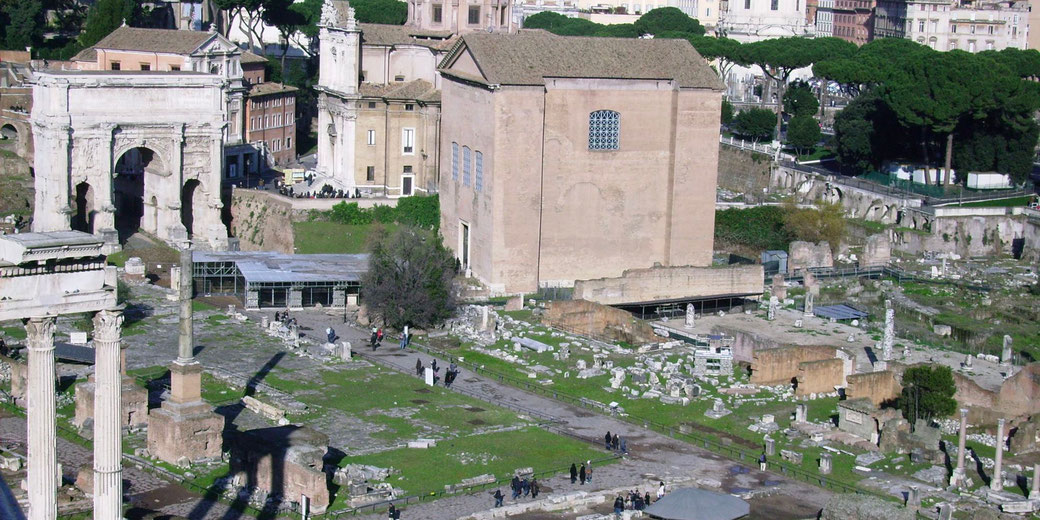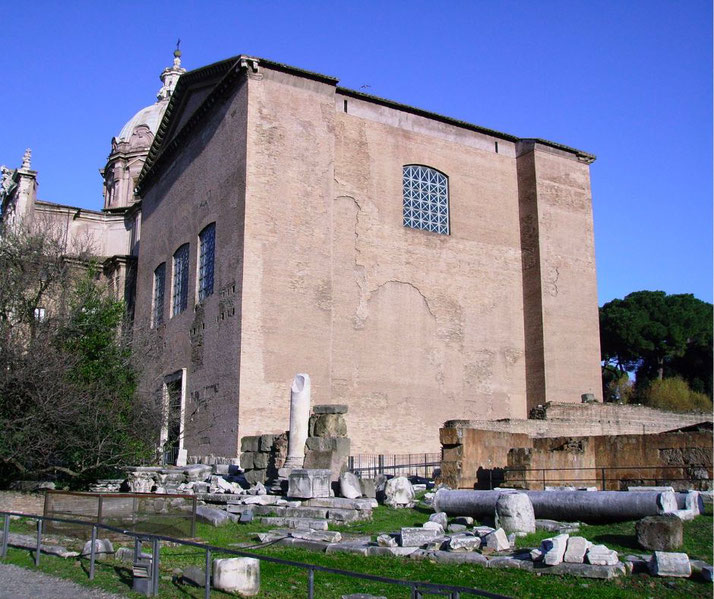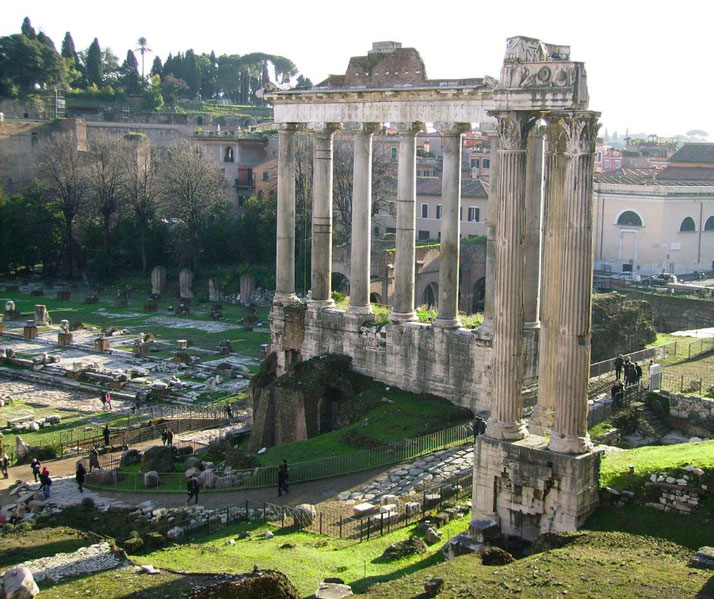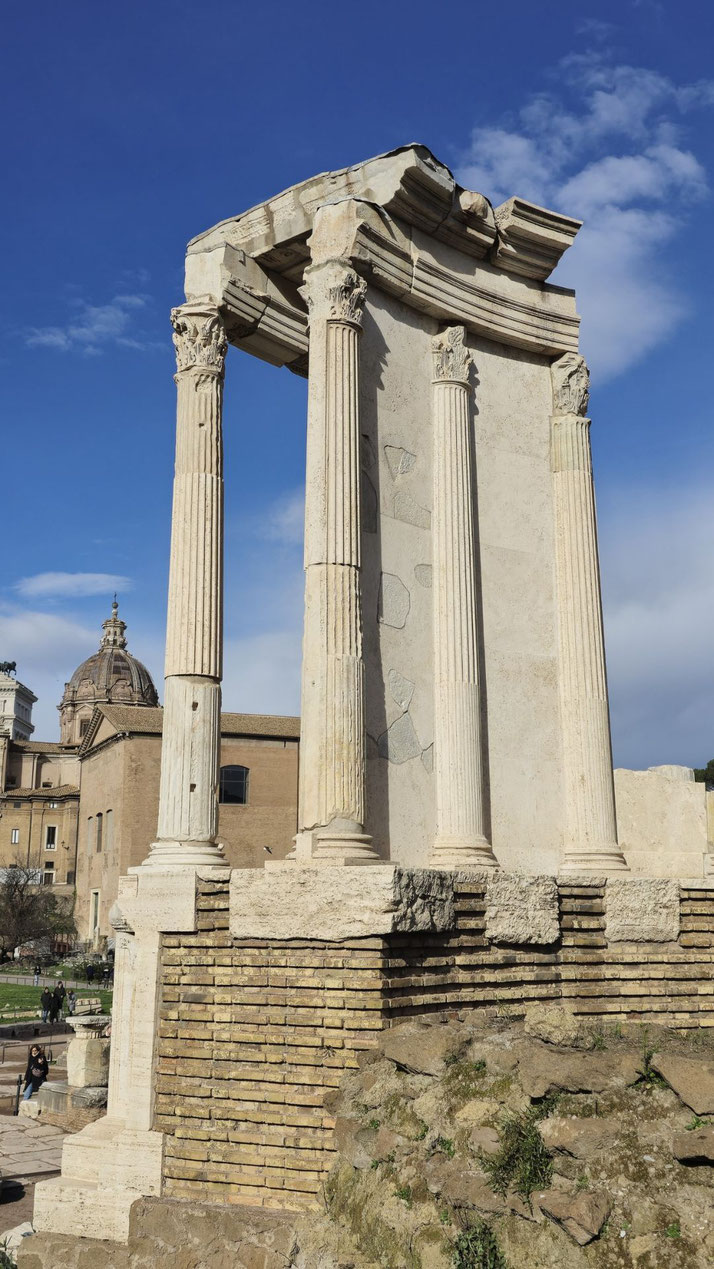The Roman Forum: Where gods, emperors, and commoners converged

The Roman Forum was the heart of Rome; it is a living testament to the grandeur, complexity, and ingenuity of a civilization that laid the foundations for much of Western culture.
Once the epicenter of Roman public life, the Forum was a bustling marketplace, a political arena, and a religious complex all rolled into one.
Here, emperors were crowned, laws were passed, and orators like Cicero swayed public opinion. It was the stage upon which the drama of ancient Roman life unfolded, from its mythical founding by Romulus to its decline in the wake of the Roman Empire's fall.
A brief history of the buildings in the Forum
The Forum's earliest incarnation was a simple marketplace, a gathering spot for the burgeoning Roman community. The space was developed from a marshy valley that had been drained.
Over time, as Rome's political and social structures grew more complex, so too did the Forum.
The construction of the Curia, the Senate House, marked a significant shift, transforming the Forum from a mere marketplace into the political nerve center of the Roman Republic.
This was where the Roman Senate—comprising the city's elite—convened to pass laws, debate policy, and make decisions that would affect the entire Roman population.
The Rostra, the speaker's platform, soon followed, becoming the stage for some of the most famous orations in history.
From here, orators like Cicero would address the public, swaying opinion on matters ranging from military campaigns to legal reforms.
The reigns of Julius Caesar and Augustus ushered in a new era of grandeur.
Caesar initiated ambitious building projects, including a new Curia, to accommodate the growing Senate.
Augustus continued this trend, adding monumental structures like the Temple of Divus Julius and the Arch of Augustus.
These were not just functional spaces; they were statements of power and divine mandate, designed to awe and inspire.

As the Roman Empire expanded, the Forum became a microcosm of the empire itself, adorned with spoils from distant lands and monuments celebrating Rome's military victories.
Triumphal arches like the Arch of Septimius Severus commemorated military successes, while temples dedicated to various gods showcased Rome's religious diversity and tolerance.
Basilicas, large public buildings used for business and legal proceedings, added another layer of functionality to the Forum, serving the needs of a growing urban population.
The various uses of the Forum by the Romans
The Roman Forum was more than just an architectural marvel; it was the beating heart of Roman social and political life.
Imagine walking into the Forum on any given day: merchants haggling over prices, politicians delivering impassioned speeches, citizens gathering to discuss the latest news, and priests performing religious ceremonies.
This was a space where all aspects of Roman life converged, from the mundane to the monumental.
Politically, the Forum was the epicenter of power and governance.
The Forum was also the venue for political rallies, public trials, and proclamations of new laws, making it a vibrant hub of civic engagement.

Socially, the Forum was a melting pot of Roman society. It was a marketplace where merchants sold goods from across the empire, from exotic spices to luxurious textiles.
But it was also a place for social interaction and networking. The rich and powerful would walk through the Forum to see and be seen, while ordinary citizens came to catch up on gossip, find work, or participate in religious ceremonies.
Temples and shrines dotted the landscape, serving not only as places of worship but also as communal gathering spots.
The Basilicas, large public buildings, were used for a variety of social functions, including business transactions and legal proceedings.
The Forum was also a stage for the grand spectacle of Roman triumphs—military parades celebrating victorious generals and their troops.
These events were social as much as they were political, reinforcing the might of Rome and the social hierarchies within its society.
The captives and spoils of war would be paraded through the Forum, often ending with sacrifices to the gods, blending the lines between politics, religion, and public spectacle.
The important religious sites in the Forum
Scattered throughout the Forum were various temples and shrines dedicated to a multitude of gods and goddesses, each serving as a testament to Rome's polytheistic belief system.
The Temple of Saturn, one of the Forum's oldest and most significant religious structures, was not only an architectural marvel but also the focal point of the Saturnalia festival, a time of feasting and gift-giving that allowed Romans to unwind and temporarily invert social norms.

The Temple of Vesta was another significant religious site, housing the sacred flame of Vesta, the goddess of the hearth.
The Vestal Virgins, priestesses chosen from noble families, were tasked with maintaining this eternal flame.
Their role was not just religious but also deeply symbolic, as the flame was considered a representation of the state's wellbeing.
The Temple of Castor and Pollux, originally built to commemorate a military victory, evolved into a space for religious worship, emphasizing the close relationship between Roman military triumphs and divine favor.

Religious ceremonies in the Forum were often grand public spectacles, designed to involve the community and reinforce shared beliefs.
Sacrifices, processions, and festivals were common occurrences, each with their own set of rituals and traditions.
These ceremonies were not just acts of devotion; they were also political tools used to legitimize authority and unify the populace.
Emperors and politicians would frequently sponsor religious events or construct new temples, presenting themselves as pious leaders favored by the gods.
Temples often housed treasuries and served as archives, storing important state documents.
Religious leaders held significant political power, and decisions made in the Forum often sought divine approval through omens and auguries.
This blending of the religious and the political made the Forum a space where the boundaries between the earthly and the divine were fluid, reflecting a worldview where gods and mortals were deeply interconnected.
The dramatic events which took place in the Forum
The Roman Forum was the stage for a multitude of key events that shaped not only the history of Rome but also the broader course of Western civilization.
One of the earliest significant events was the traditional founding of Rome itself, dated to April 21, 753 BCE, a mythological event later associated with the Forum's original function as a marketplace and gathering spot.
Over the centuries, the Forum evolved, mirroring the complexities of Roman society and governance.
In 44 BCE, the Forum became the backdrop for one of history's most famous assassinations: that of Julius Caesar.
Although Caesar was actually killed in the Theatre of Pompey, his body was brought to the Forum for a public funeral.
The event was a political earthquake that led to the end of the Roman Republic and the rise of the Roman Empire.
Mark Antony's funeral oration for Caesar, delivered from the Rostra, is one of the most famous speeches ever given, immortalized by Shakespeare and countless historians.
Another pivotal event was the Battle of Milvian Bridge in 312 CE, where Constantine the Great emerged victorious.
Although the battle itself did not take place in the Forum, its consequences were deeply felt there.
Constantine attributed his victory to the Christian god and subsequently legalized Christianity.
This led to a profound transformation in the religious landscape of the Forum, with Christian basilicas eventually replacing many of the ancient Roman temples.
Why is the Forum in ruins today?
As the Western Roman Empire crumbled, culminating in its official fall in 476 CE, the Forum fell into a state of decay and neglect.
After almost 1000 years of use, the grand edifices that had once symbolized Rome's might and majesty were repurposed or dismantled.
Temples were converted into Christian churches, and some structures were even torn down to provide building materials for new constructions.
Over time, the Forum became a shadow of its former self, its glory obscured by layers of dirt, debris, and forgetfulness.
During the Middle Ages, the area that had once been the Forum was mostly used for agriculture and grazing.
It became known as the 'Campo Vaccino', or 'Cow Field', a far cry from its days as the epicenter of Roman civilization.
The Renaissance sparked a renewed interest in the classical world, but it wasn't until the 18th and 19th centuries that systematic excavations began.
Archaeologists like Carlo Fea and Giuseppe Fiorelli undertook the painstaking work of unearthing the Forum's hidden treasures, guided by ancient texts and early modern drawings.
The 20th century saw an acceleration in excavation and restoration efforts, particularly under the fascist regime of Benito Mussolini, who sought to glorify Italy's imperial past.
Despite the problematic politics of the time, these efforts did result in significant archaeological discoveries and contributed to our understanding of the Forum's layout and history.
In the post-war period, archaeological work continued, aided by advances in technology and methodology.
Today, the Roman Forum is one of the most visited archaeological sites in the world, attracting millions of tourists and scholars keen to explore its ruins and imagine its former glory.
Modern excavations and research continue to reveal new insights into this ancient space, adding layers of understanding to an already complex and multifaceted history.
What do you need help with?
Download ready-to-use digital learning resources
Copyright © History Skills 2014-2025.
Contact via email
With the exception of links to external sites, some historical sources and extracts from specific publications, all content on this website is copyrighted by History Skills. This content may not be copied, republished or redistributed without written permission from the website creator. Please use the Contact page to obtain relevant permission.





